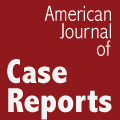The effect of fluoxetine on gastric myoelectric activity in subjects with functional dyspepsia
Cezary Rudnicki, Grażyna Kulig, Sebastian Foryś, Janusz Śmigieliski, Cezary Chojnacki, Grażyna Klupińska
Med Sci Tech 2009; 50(3): RA175-178
ID: 881687
Available online:
Published: 2009-03-22
Introduction: Gastrointestinal motor abnormalities and visceral hypersensitivity are observed in patients with functional dyspepsia. High percentage of anxiety and depression disorders in functional dyspepsia should also be mentioned. The aim of own study was to estimate the effect of fluoxetine on gastric myoelectric activity. Material and methods: The study involved 18 women and 10 men, aged 18-58 years. Functional dyspepsia was diagnosed on the basis of Rome III Criteria. Four-channel electrogastrography was performed before and after discontinuation of medications. The second electrogastrographic investigation was performed in the patients were after administeration of fluoxetine (20 mg). Results: The power index of dominant postprandial activity (PR) was diminished in postprandial distress syndrome (PDS) and epigastric pain syndrome (EPS) in relation to the values accepted for healthy subjects. After fluoxetine no statistically significant differences were observed in the obtained results in the group of patients with PDS . Beneficial changes were observed in the postprandial period in patients with EPS. Particulary the percentage of tachygastry decreased from 8.84 ± 9.03 to 4.15 ± 4.75% (p=0.045). Discussion: Serotonin takes part in the regulation of all digestive tract functions, particularly in gastrointestinal motor activity. The mechanism of visceral hypersensitivity seems to be associated with serotonin homeostasis disorders both in digestive tract and in central nervous system. The awareness of this was the reason of making attempts to treat digestive tract dysfunction with agents changing serotonin metabolism. The presented results of this study confirm beneficial effect of fluoxetine on the reduction of the percentage of tachygastry in postprandial period in patients with dyspepsia. Conclusions: Gastric myoelectric activity in subjects with functional dyspepsia depends on the clinical form of the disease. The power index of dominant postprandial activity is significantly lower in patients with PDS compared to those with EPS. Fluoxetine in a single dose has a beneficial effect on gastric motoric activity in postprandial period in patients with EPS which is manifested mainly by the increase of the percentage of normogastry. (Clin Exp Med Lett 2009; 50(3):175-178)
Keywords: functional dyspepsia, elektrogastrography, fluoxetine



